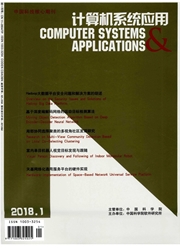

 中文摘要:
中文摘要:
论文答辩分组是高校管理中的常见问题,为保证分组的公平性和科学性,须考虑老师和学生间的若干限制条件,存在两个相互矛盾的条件——互回避原则和均匀原则.寻求最优的分组方案使两个条件都能尽量满足,是本文要解决的核心问题.通过建立数学模型,使答辩分组问题可用矩阵编码表示,并将两个冲突的条件整合为一个目标函数.然后采用单目标优劣交叉的微分进化求解该问题,通过构造合适染色体、适应度函数,进行初始化种群、优劣交叉、变异修正等操作,逐代进化得到最优解.为验证该方法的优越性,与一般算法求解效果对比,结果表明标优劣交叉的微分算法能够得到更科学的分组方案、更多的可行方案.
 英文摘要:
英文摘要:
The thesis defense grouping is a common problem in the college management. To ensure the fairness and scientificity, it is necessary to consider some constraints between supervisors and students when grouping. There are two inherent contradictions: the principles of mutual avoidance and uniformity. In this paper, the main issue is to find out an optimal solution that satisfies the two conditions as far as it is possible. Through the establishment of mathematical model,the respondent grouping problem is summarized as the matrix encoding. Then two conflict conditions are consolidated into one objective function. The single objective differential evolution with superior-inferior crossover scheme is adopted to solve this problem. A suitable chromosome representation and fitness function are designed. A series of operations such as mutation, superior-inferior crossover and modification are performed. The optimal solution is obtained when the evolution is terminated. To test the advantages of this method, a general algorithm is designed for comparison with it. The results show that the grouping solution obtained by differential evolution using a superior-inferior crossover scheme is more scientific and feasible than the general algorithm.
 同期刊论文项目
同期刊论文项目
 同项目期刊论文
同项目期刊论文
 期刊信息
期刊信息
